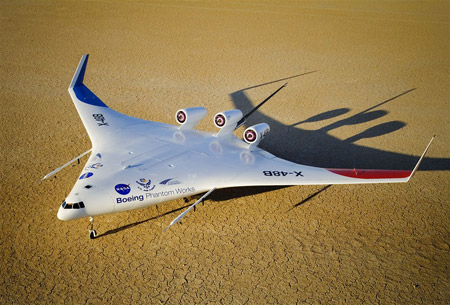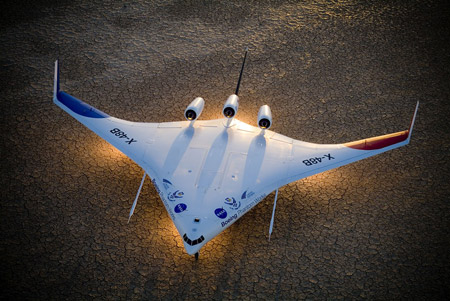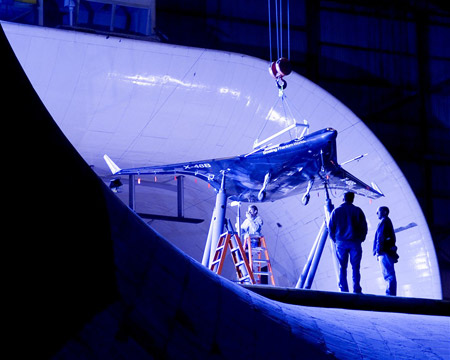According to Flightglobal, Boeing is working with two potential customers to define a commercial freighter variant of its blended wing body large transport aircraft X-48B as it prepares to fly a subscale model of the flying-wing design at NASA Dryden in California.

“We have been working with a couple of customers,†says George Muellner, president, advanced systems, for Boeing Integrated Defense Systems. “We have a customer, we have finalised what they want, and it is now an issue of customer funding and our desire to invest. The basic design is not a tube, it’s a rectangular pressure vessel, so material design is an issue,†Muellner says. “The internal structure is like an array of ISO containers,†he says, which is one part of its appeal to freight operators. “It’s fuel efficient and it’s easy to load.â€
Boeing has been working on the BWB concept for years, but the design is still at an early stage.
“The earliest it could be out there is eight to 10 years, initially as a commercial freighter and beyond that for military applications,†says Muellner.

The X-48B cooperative agreement by Boeing, NASA and the Air Force Research Laboratory (AFRL) culminates years of BWB research by NASA and Boeing. AFRL is interested in the concept for its potential future military applications.
“We believe the BWB concept has the potential to cost effectively fill many roles required by the Air Force, such as tanking, weapons carriage, and command and control,” said Capt. Scott Bjorge, AFRL X-48B program manager. “This research is a great cooperative effort, and a major step in the development of the BWB. AFRL is inspired to be involved in this critical test program.”
NASA also is committed to advancing the BWB concept. NASA and its partners have tested six different blended wing body models of various sizes over the last decade in four wind tunnels at the Langley Research Center.
“One big difference between this airplane and the traditional tube and wing aircraft is that — instead of a conventional tail — the blended wing body relies solely on multiple control surfaces on the wing for stability and control,” said Dan Vicroy, NASA senior research engineer at the Langley Research Center. “What we want to do with this wind-tunnel test is to look at how these surfaces can be best used to maneuver the aircraft.”


The two X-48B prototypes were built for Boeing Phantom Works by Cranfield Aerospace Ltd., in the United Kingdom in accordance with Boeing requirements and specifications. Made primarily of advanced lightweight composite materials, the prototypes weigh about 400 pounds each. Powered by three turbojet engines, they will be capable of flying up to 120 knots and 10,000 feet in altitude during flight testing.
